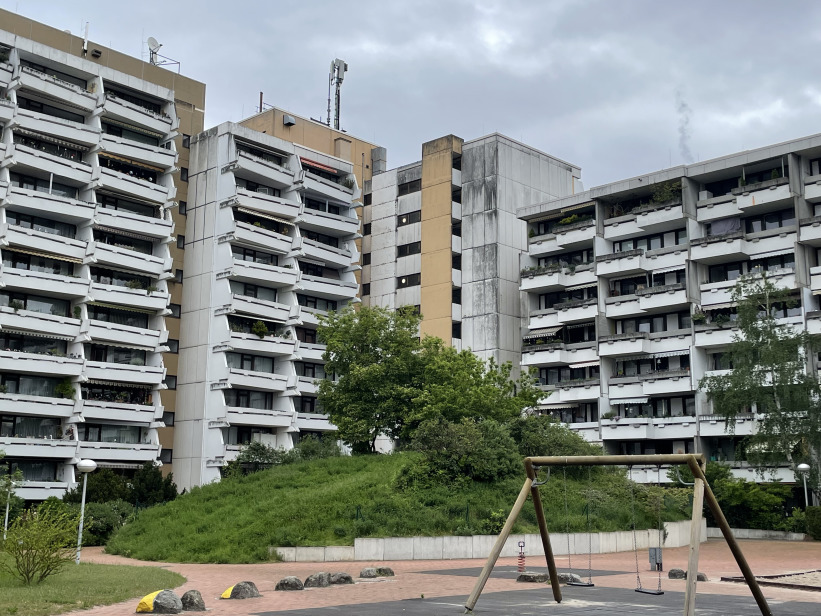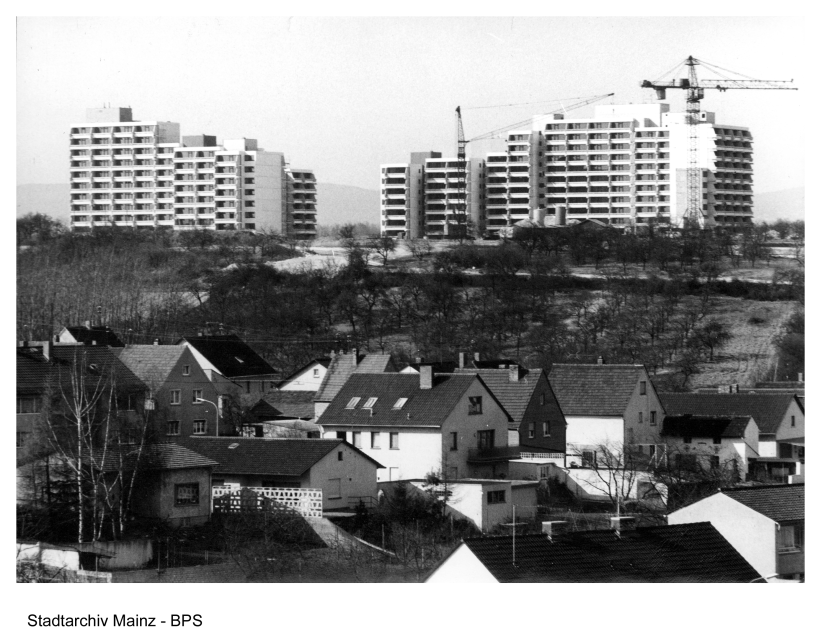Neue Heimat SĂĽdwest: Römerquelle Residential Complex, 1973–1976
- Mainz, Germany, Show on map
- #RES #Western Europe
-
On the outskirts of the Mainz-Finten district, which was incorporated in the 1960s, a brutalist façade stretches out towards the orchards and fields. Balconies with moulded concrete flower boxes zigzag into the façade, jumping back and forth, creating a dancing impression that is enhanced by the changes in light and shadow depending on the time of day.
The Römerquelle housing estate consists of two buildings built into a gently rising slope and surrounding a central square. The design of the floor plans is based on the interplay of offset rectangular modules with occasional projections. From the highest point, an eleven-storey corner module, the building loses height and gradually approaches the field before receding again. The various parts of the building are positioned in gaps to each other and are connected by staircases, creating niches in the façade that interrupt the rhythm of the balcony zigzag. This creates a horizontal structure to the façade, which is given a graphic dynamic by the diagonal projection of the loggias.Â
The Römerquelle housing estate tells of the tension between rural and urban space: the acute need for affordable housing in the 1970s led to a land-use plan by the non-profit building group Neue Heimat Südwest, which planned the large-scale Römerquelle residential complex on the edge of the municipality of Finthen. The estate is accessed via a residential collector road, which is designed as a ring road. The development plan provided for a strict separation of car traffic and pedestrian paths. The estate is characterised by spacious green areas and a playground. The individual flats were built using modular prefabricated elements, the so-called ELEMENTA system from Neue Heimat; the latest trend in flexible floor plan design at that time.
Translation from Luzia Reis’ article in: MAINZ 1970–2000. Das neue Selbstverständnis in der Architektur (2024) by Die Betonisten
-
In use (last updated on October 31, 2024).

